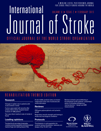Burden of stroke in the Philippines
Abstract
Based on disability-adjusted life-years, stroke is the second leading cause of death and among the top five diseases with the greatest burden. Although two community-based studies have been conducted to determine the prevalence of stroke in the Philippines, the incidence has not been nationally recorded to date. The prevalence ranged from 1·9% to 6·59%, and ‘Wiihabilitation’, a rehabilitation stroke therapy, is widely practiced. A clinical trial for stroke rehabilitation using the Chinese Medicine NeuroAid®, which consists of several herbs, is ongoing in many hospitals across the Philippines. Due to their ready availability, phytomedicines are widely used, especially in the rural areas, for the treatment of hypertension, diabetes mellitus, and hypercholesterolemia, which are predisposing factors for stroke in the Philippines. Due to the increasing number of stroke cases annually, the government of the Philippines should emphasize primary and secondary prevention strategies.




